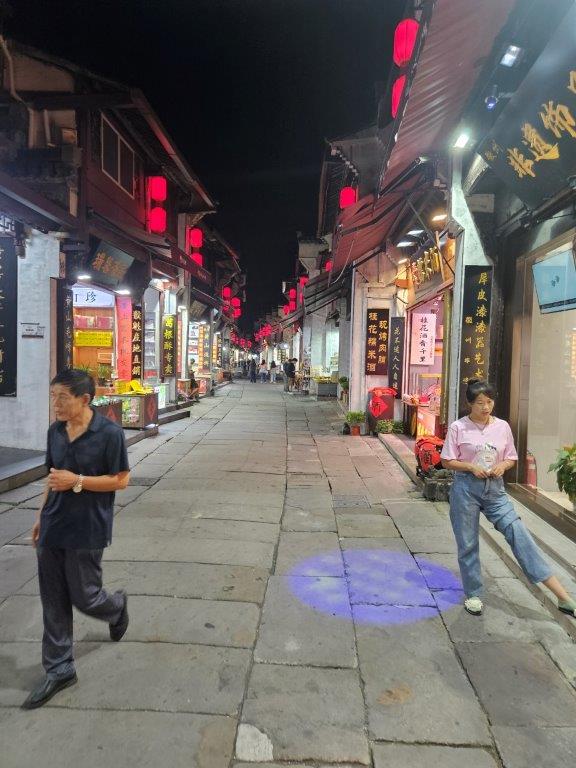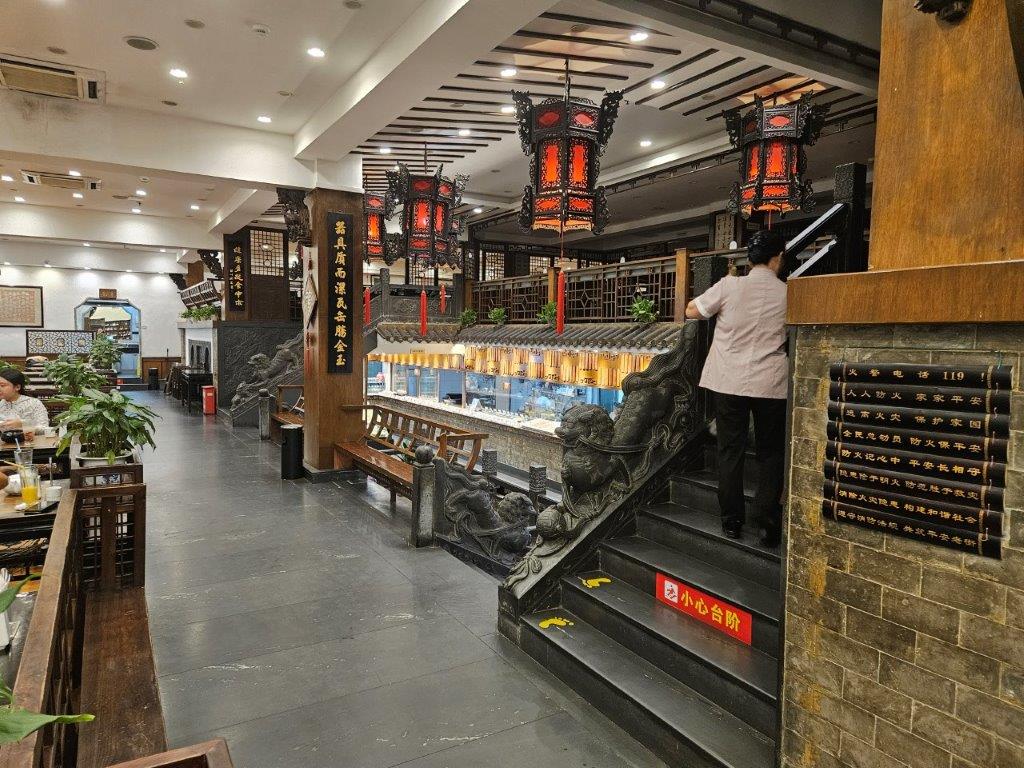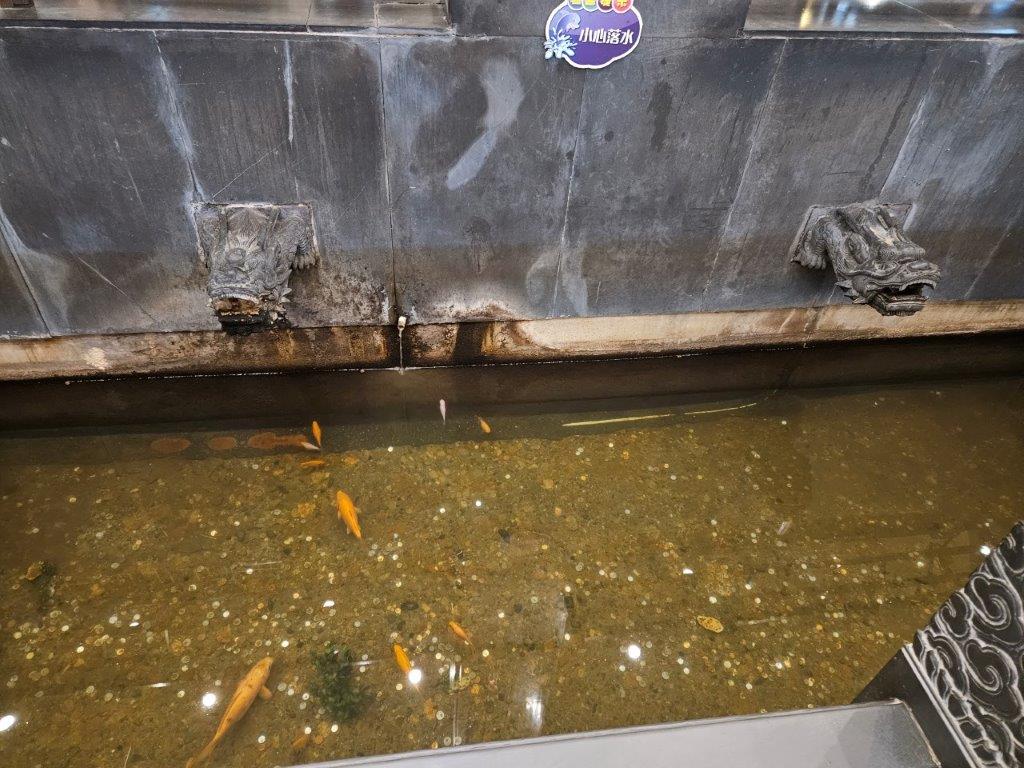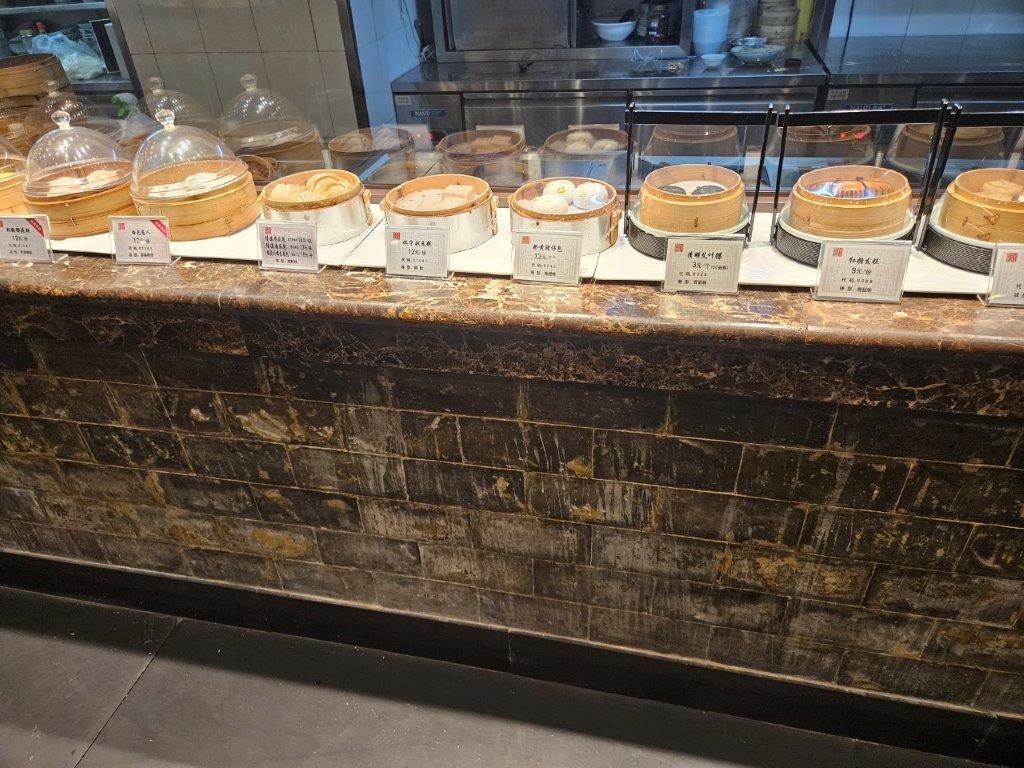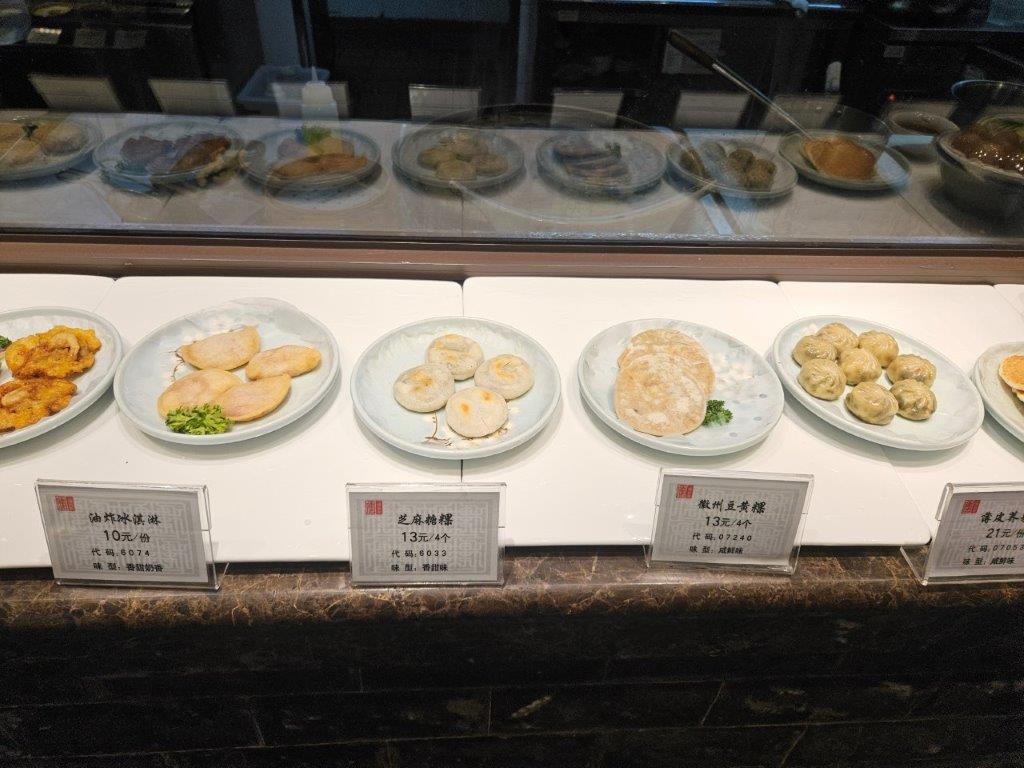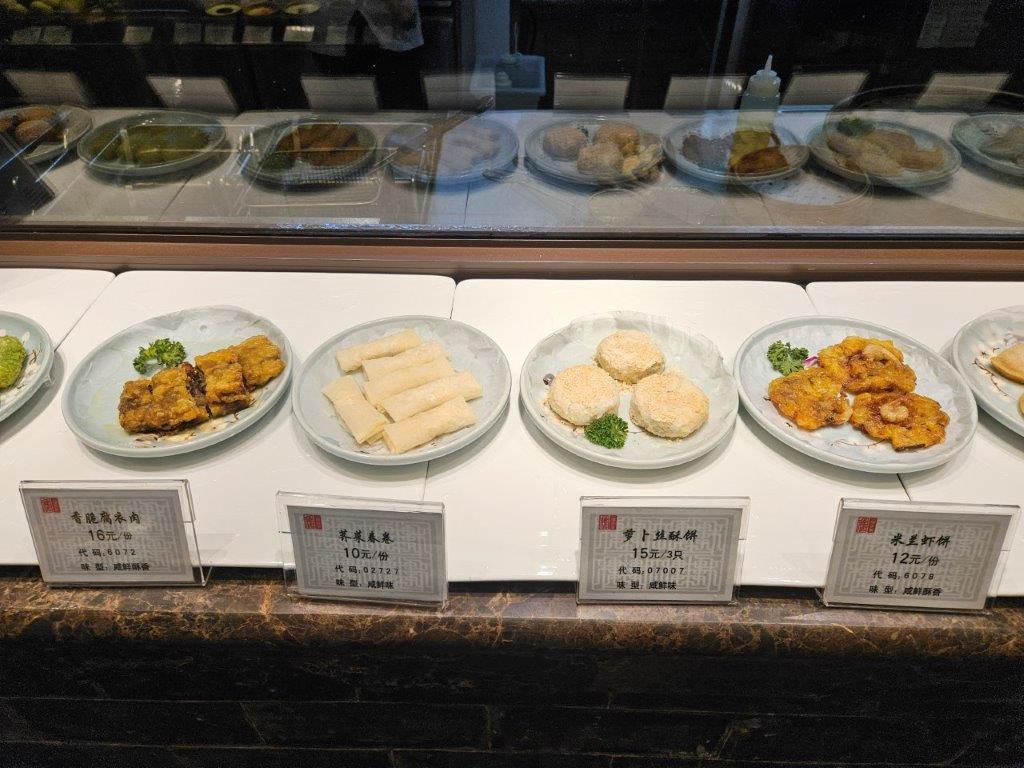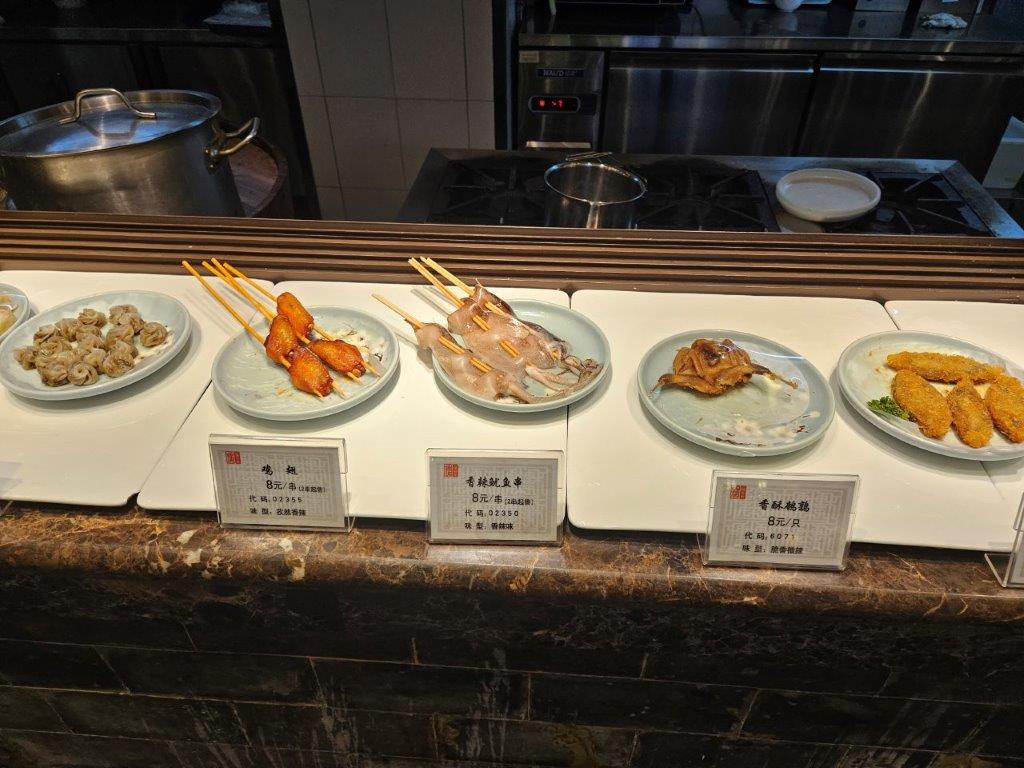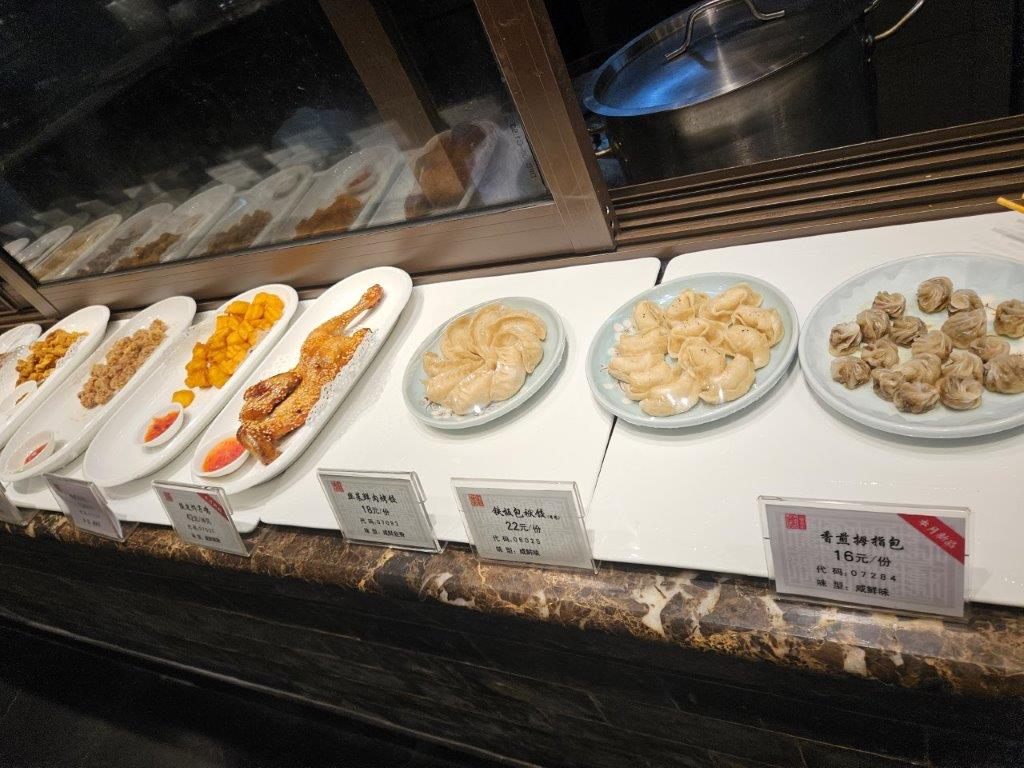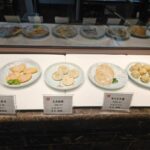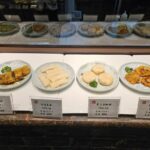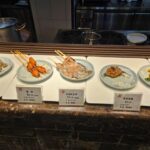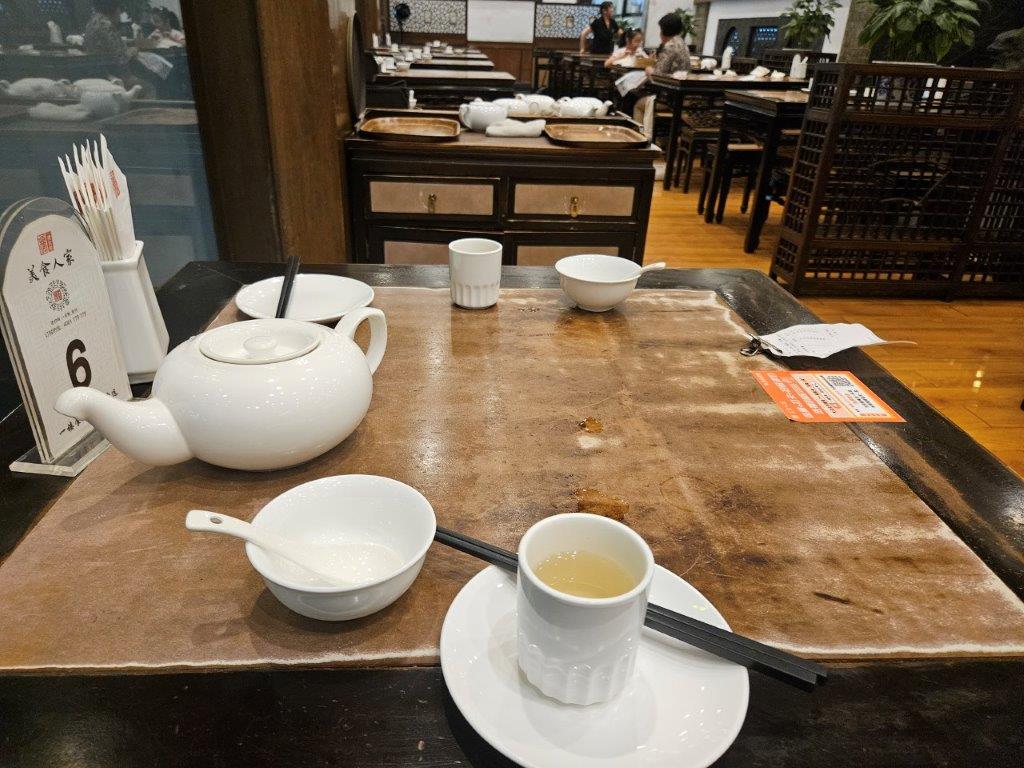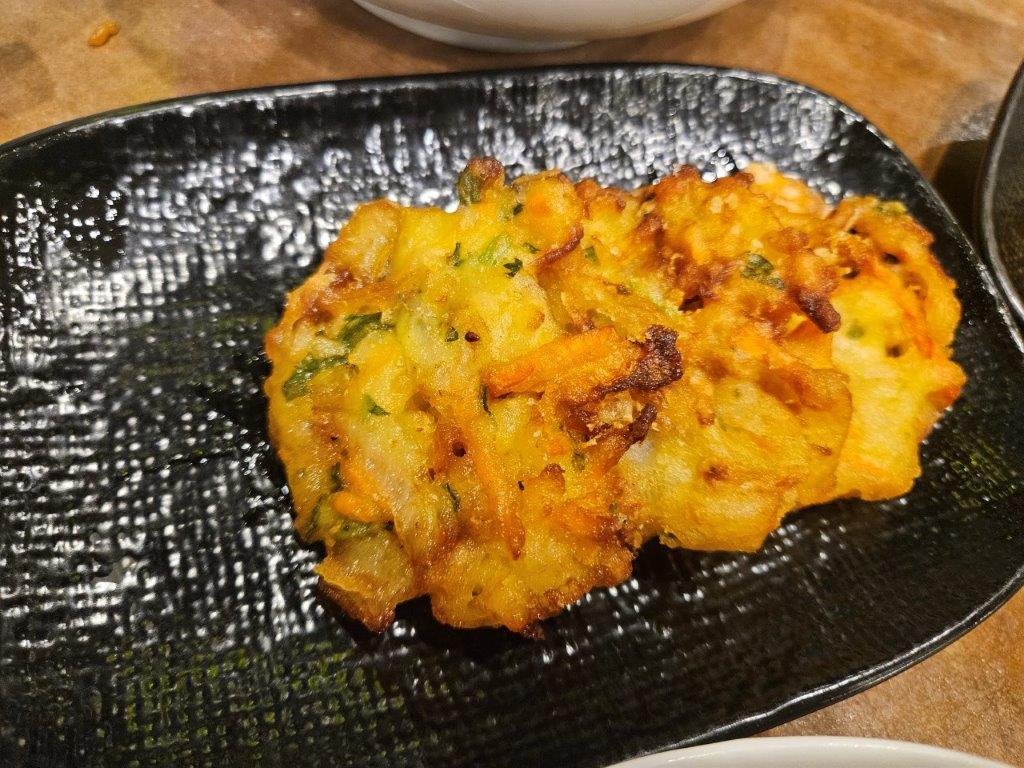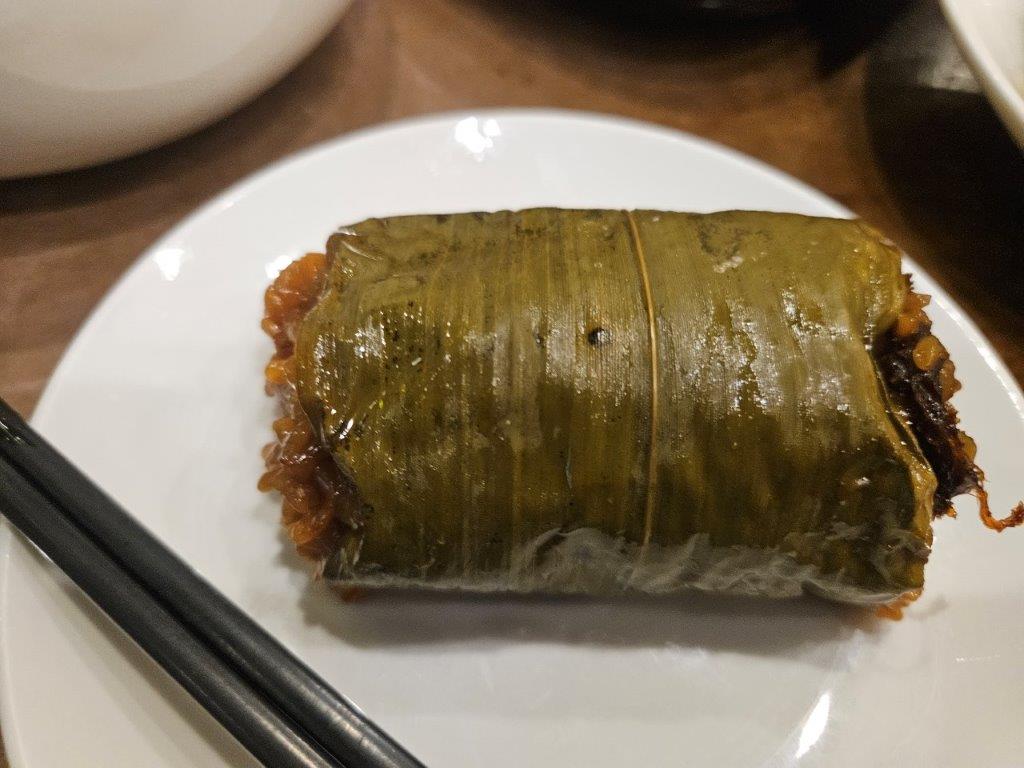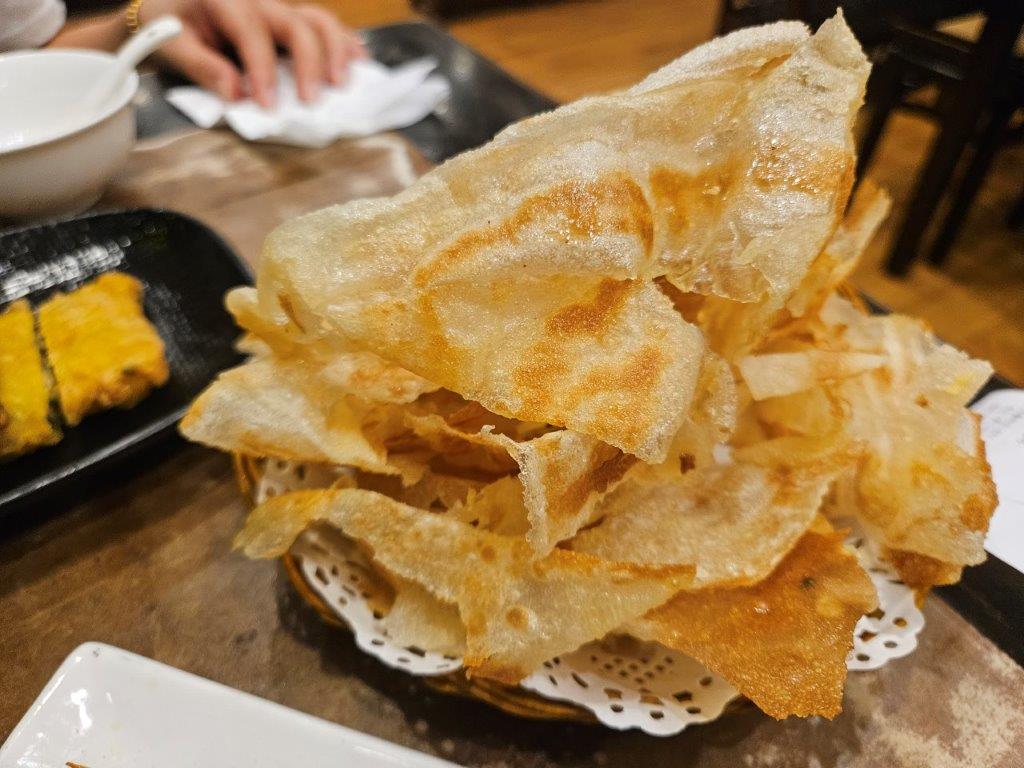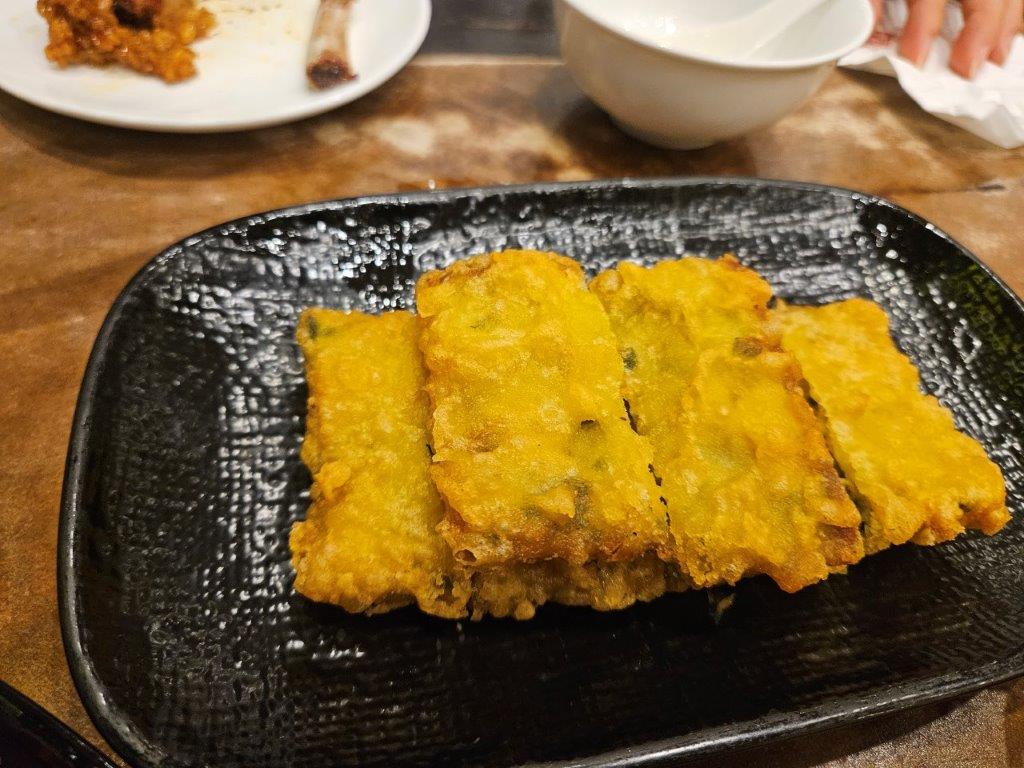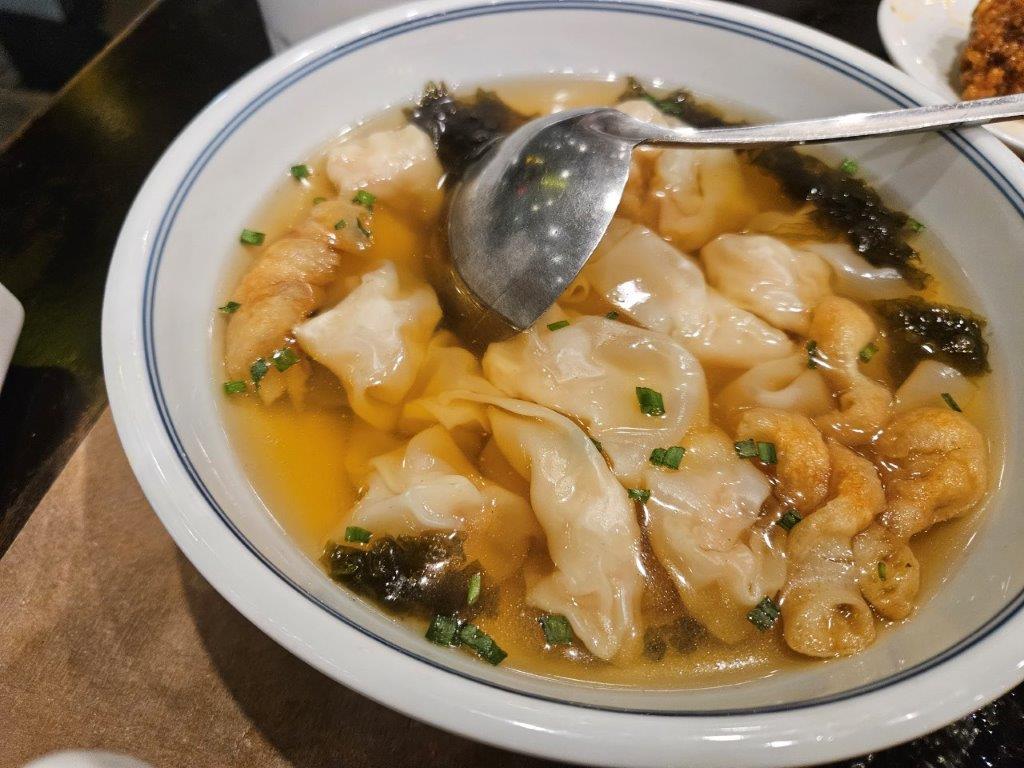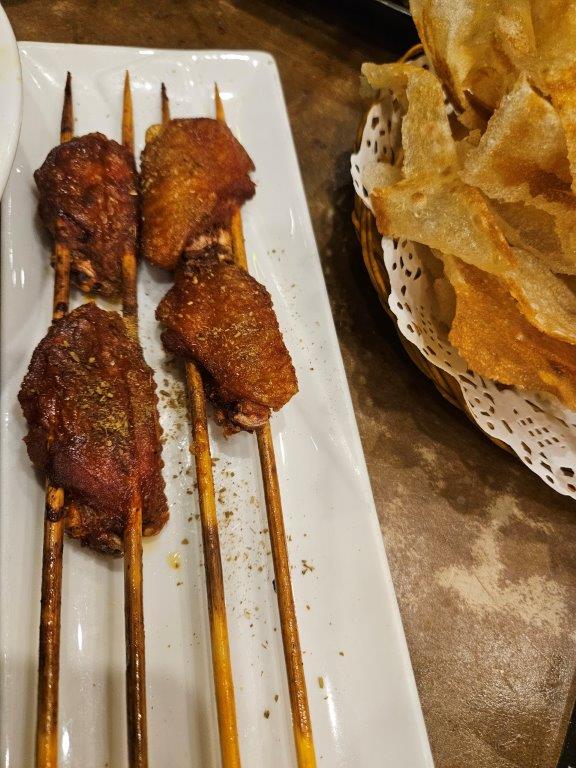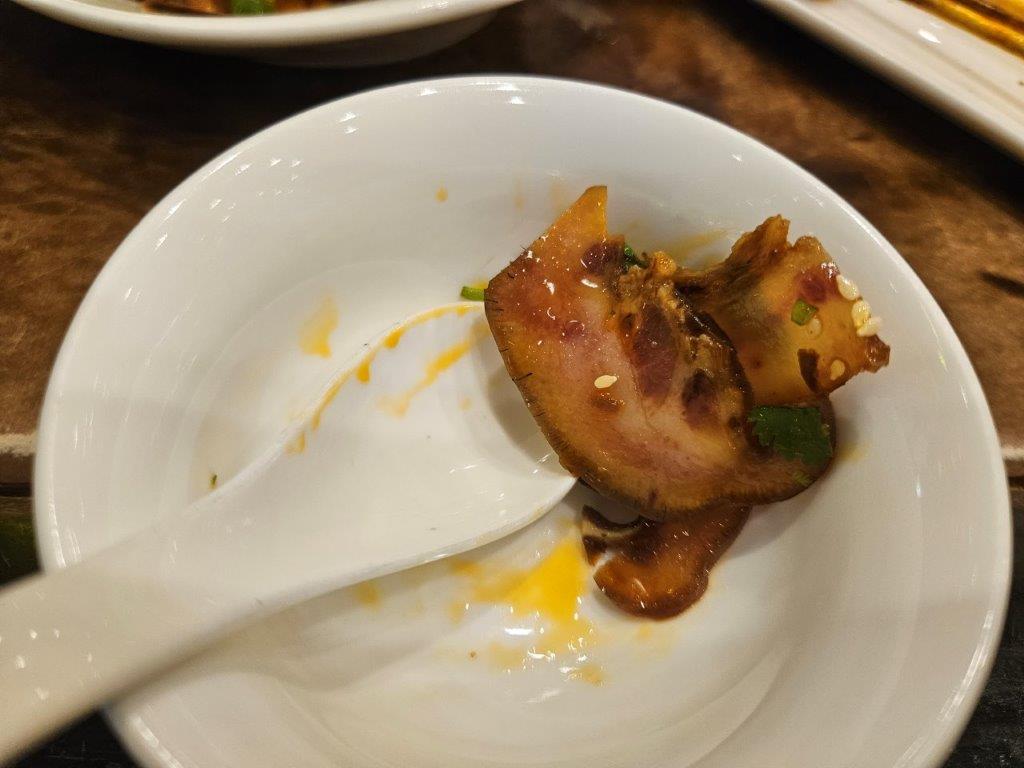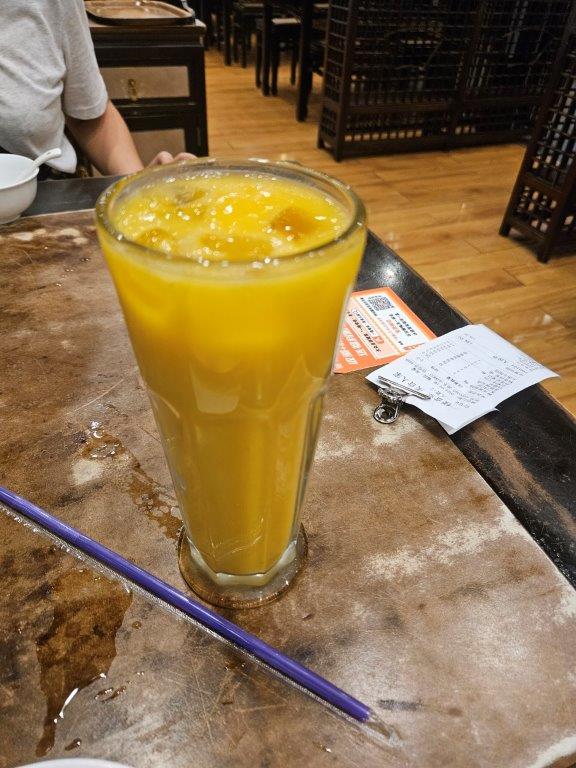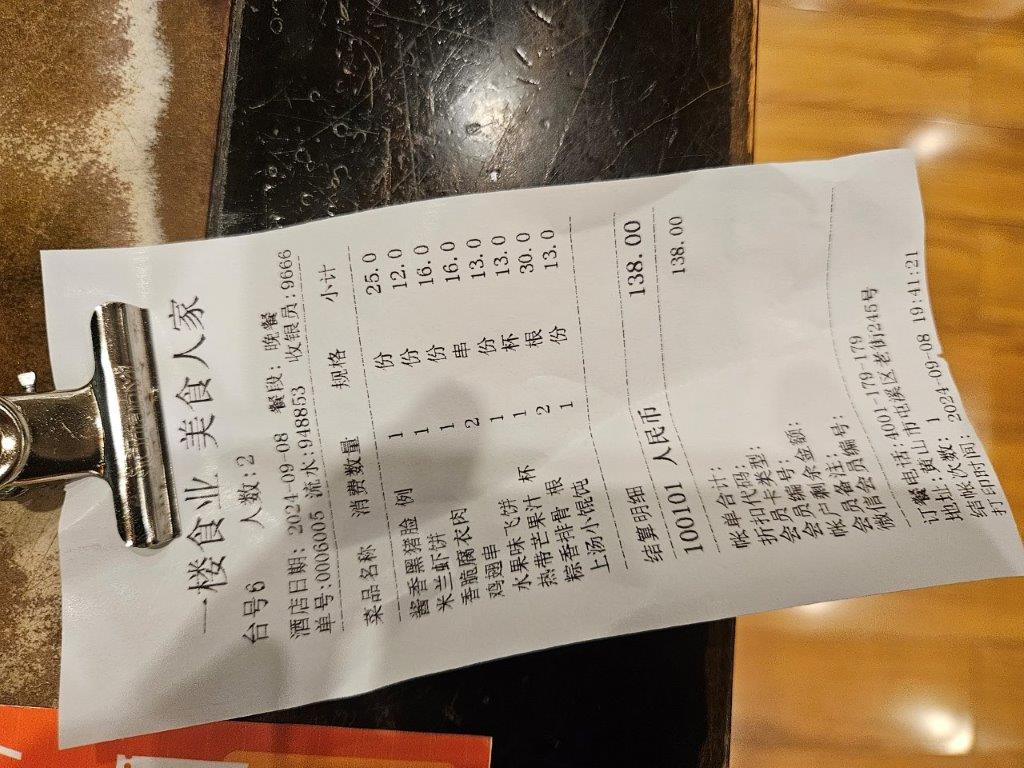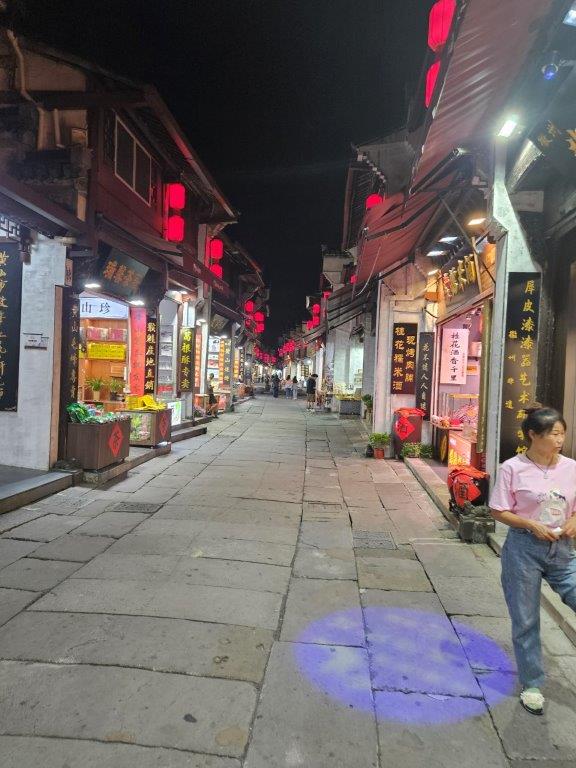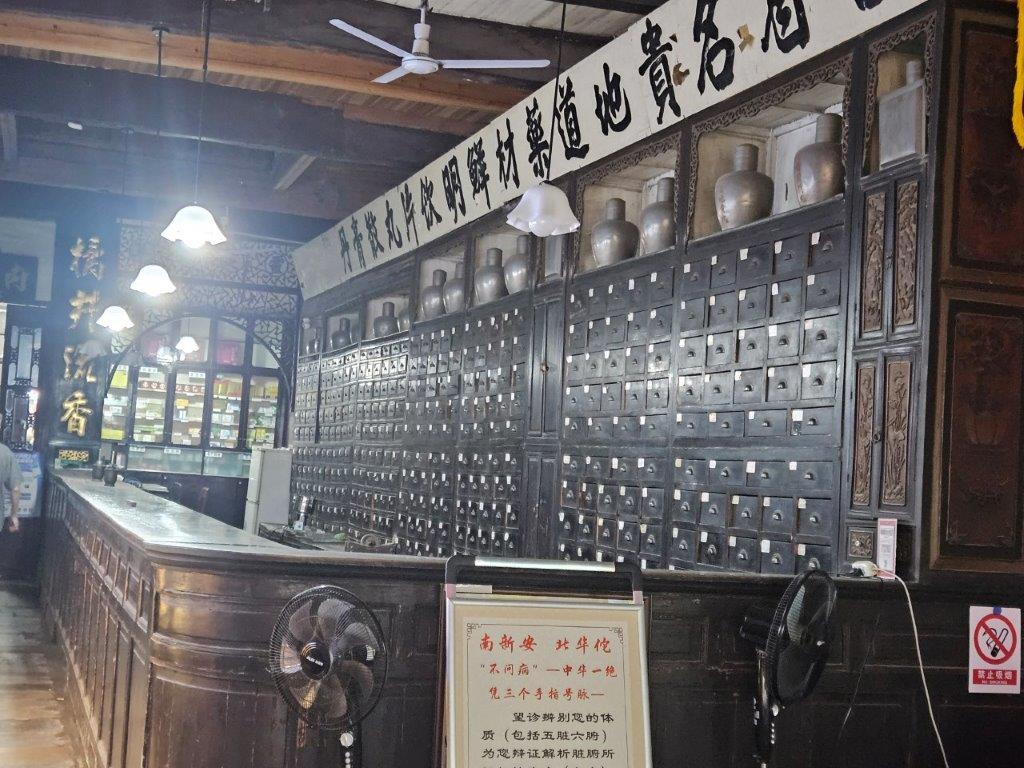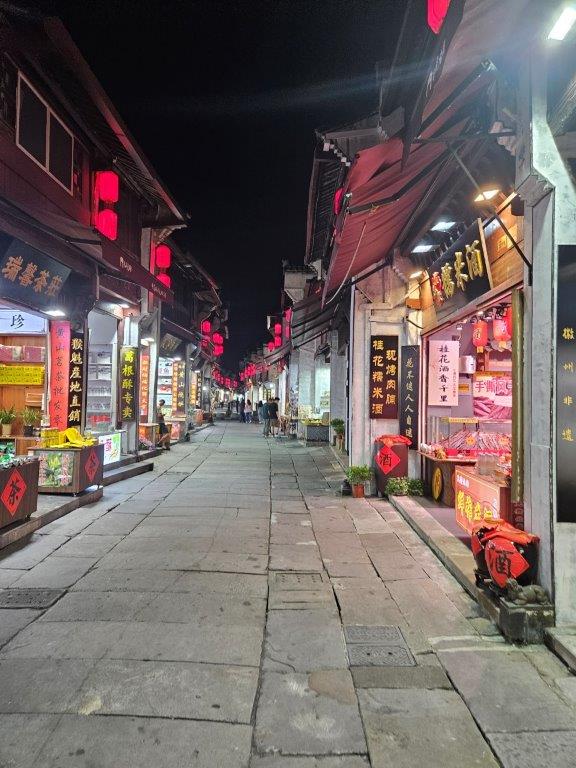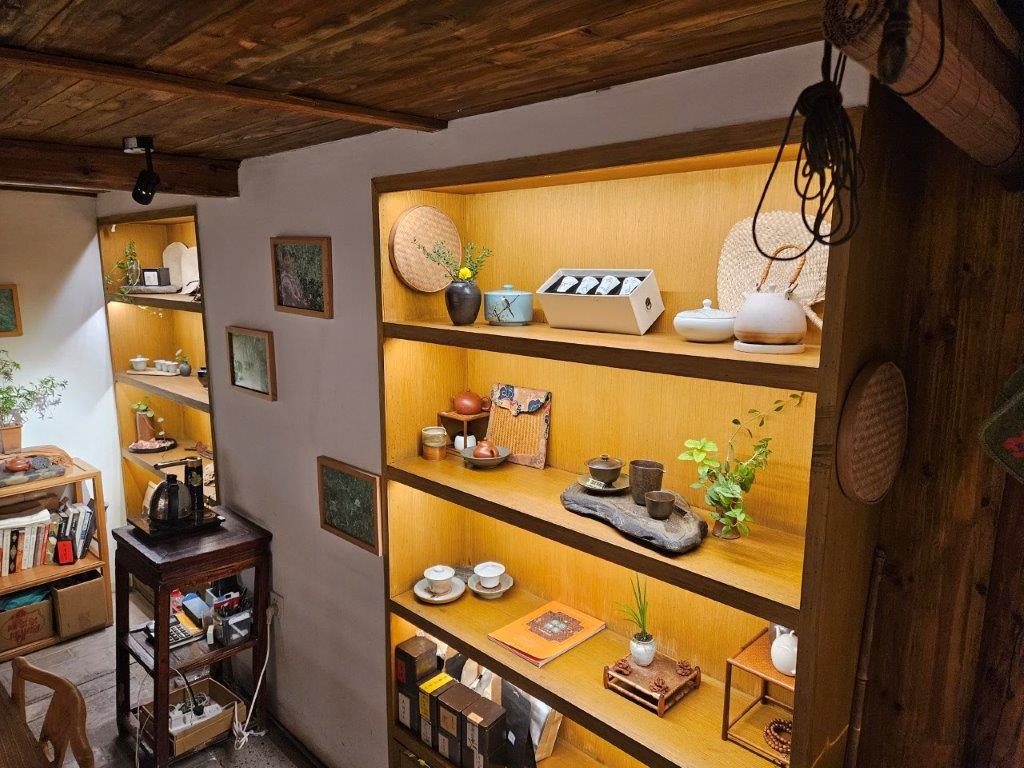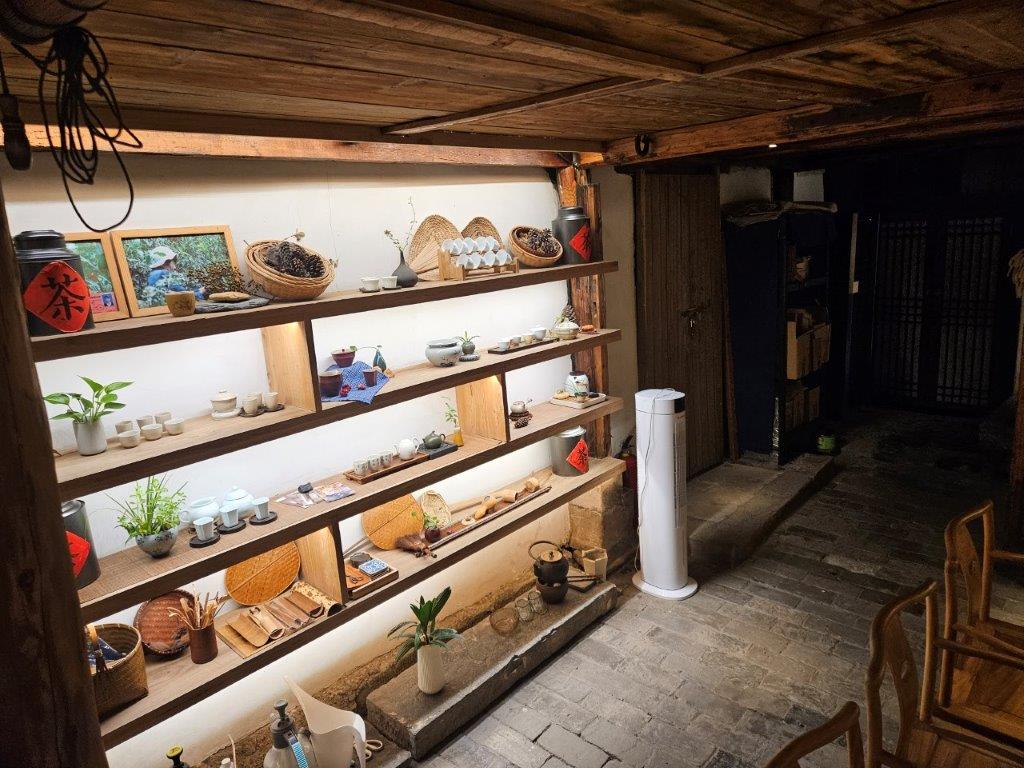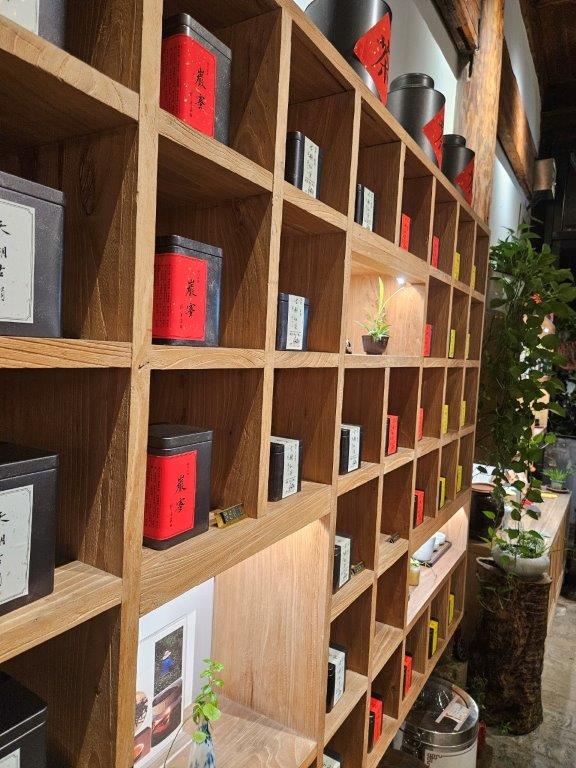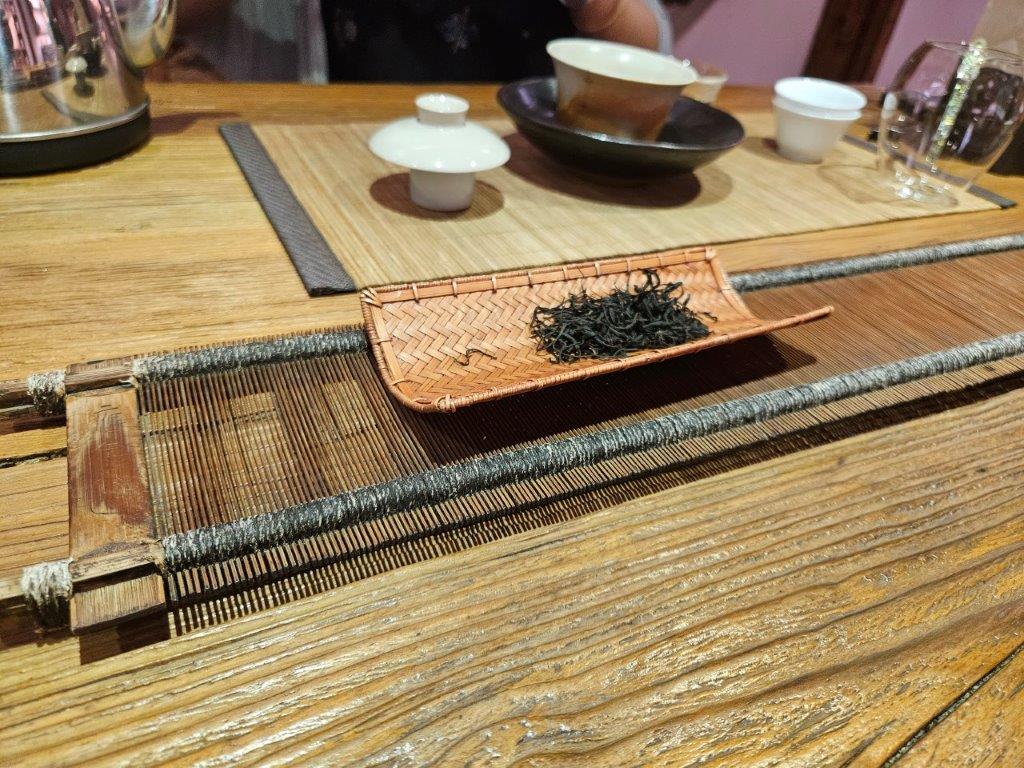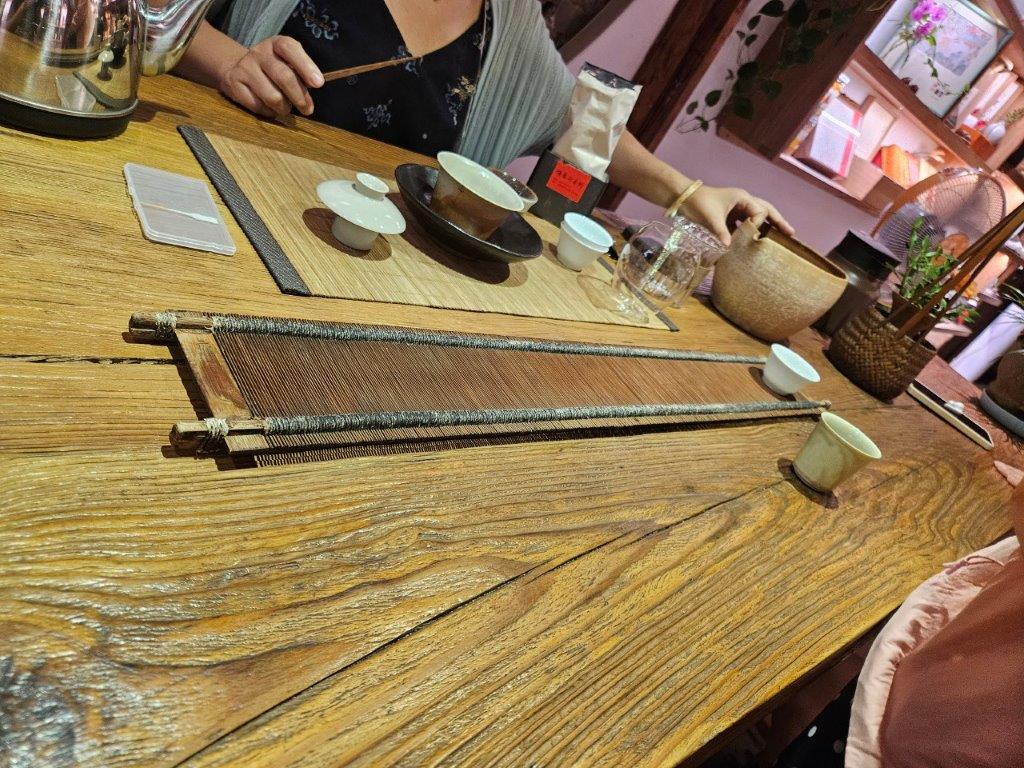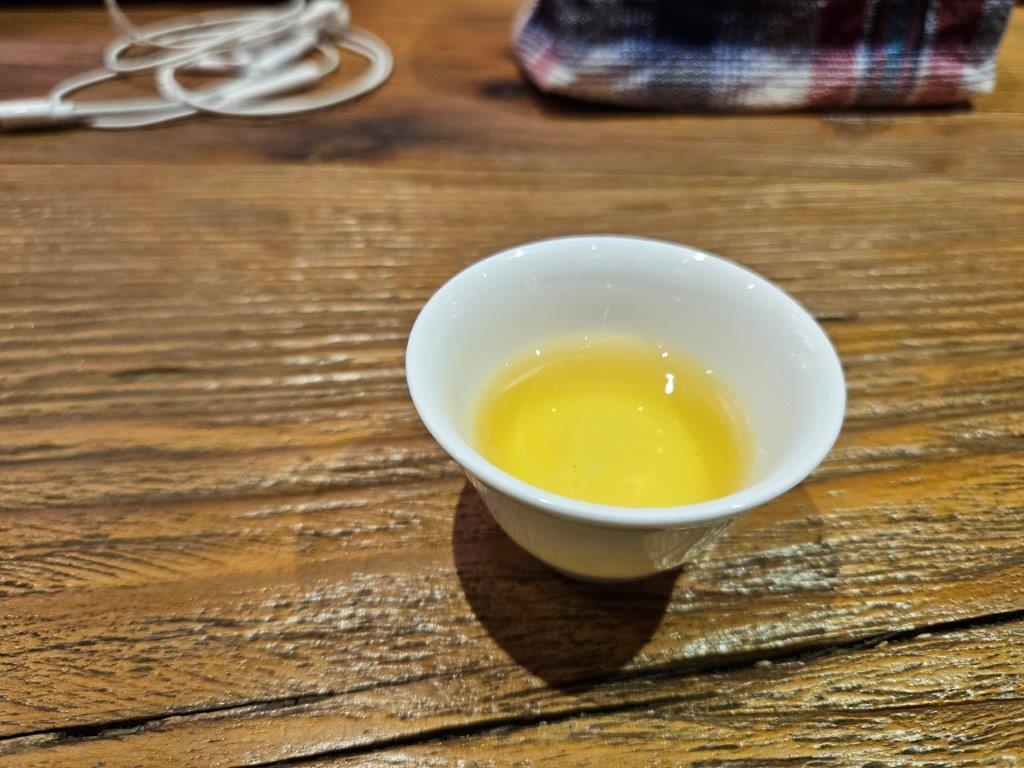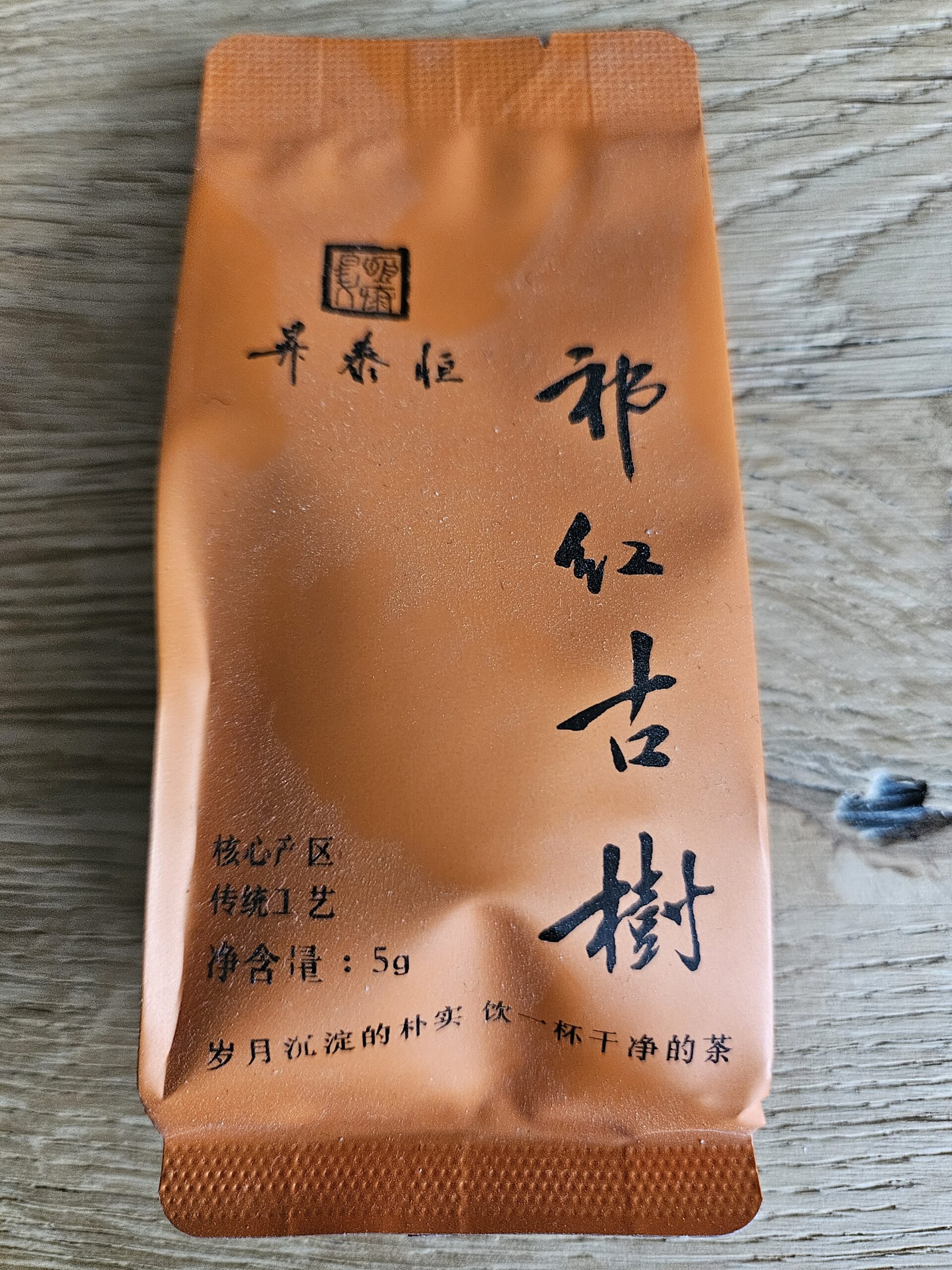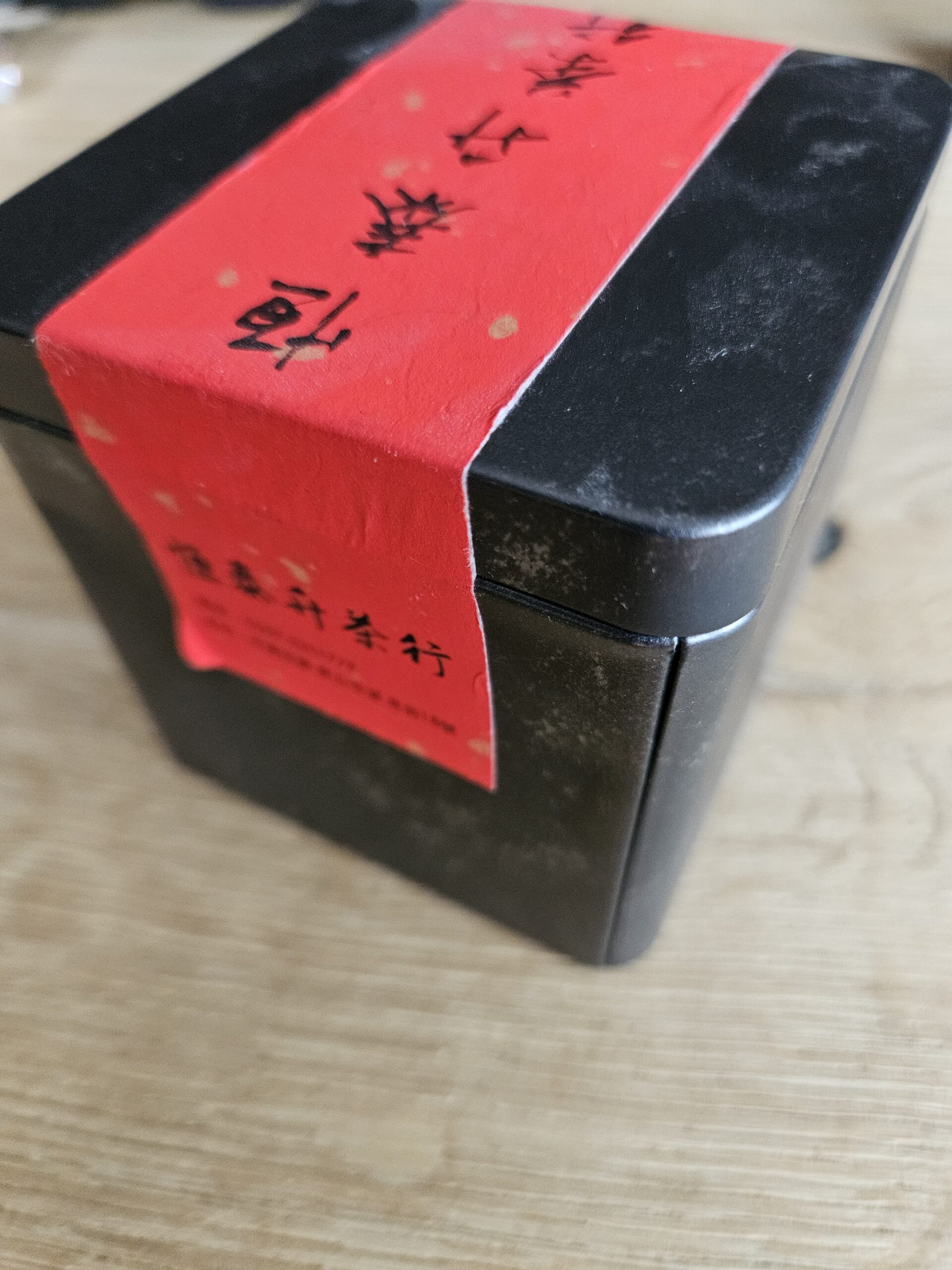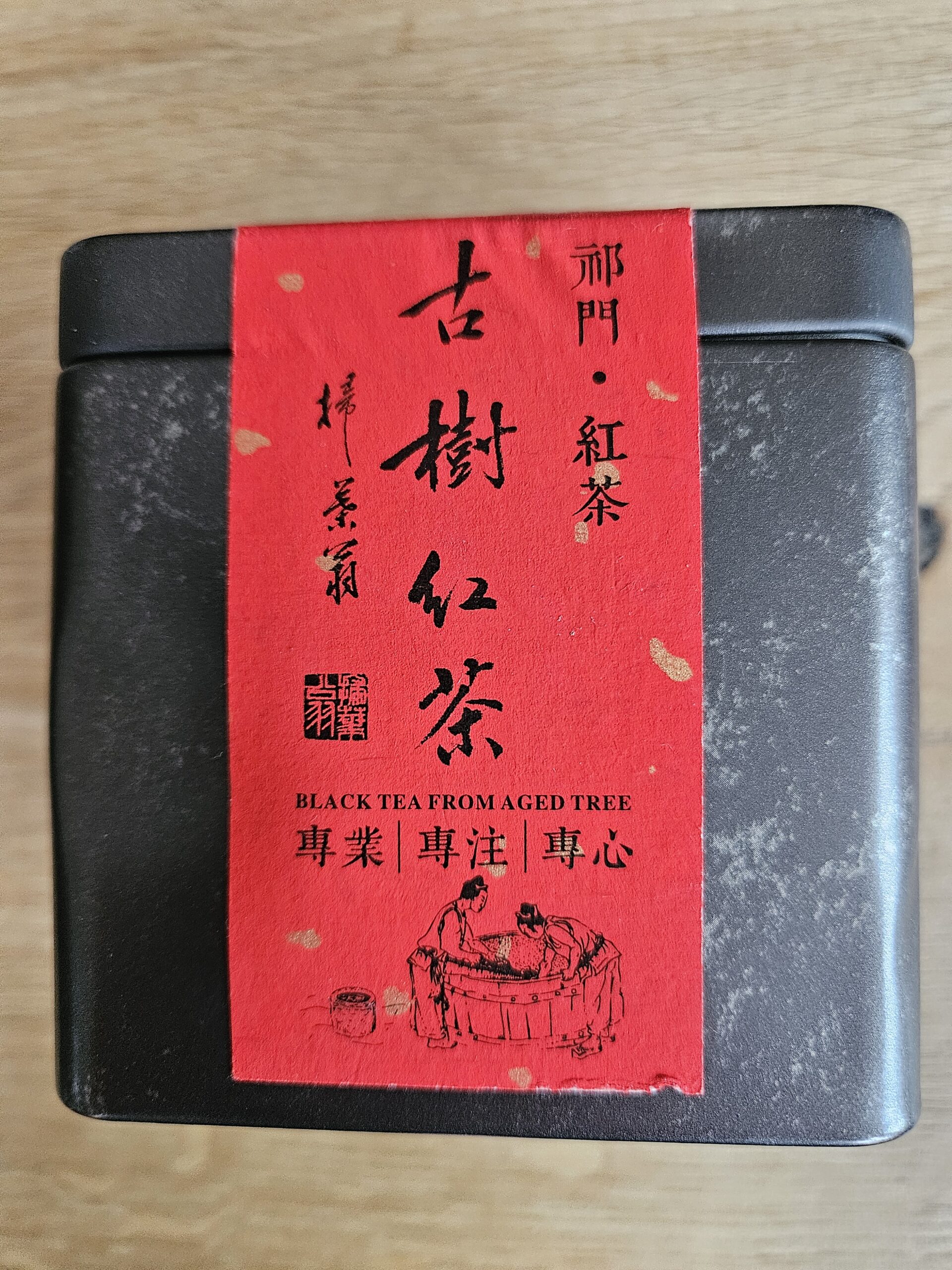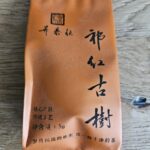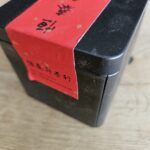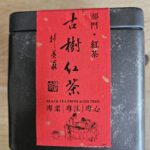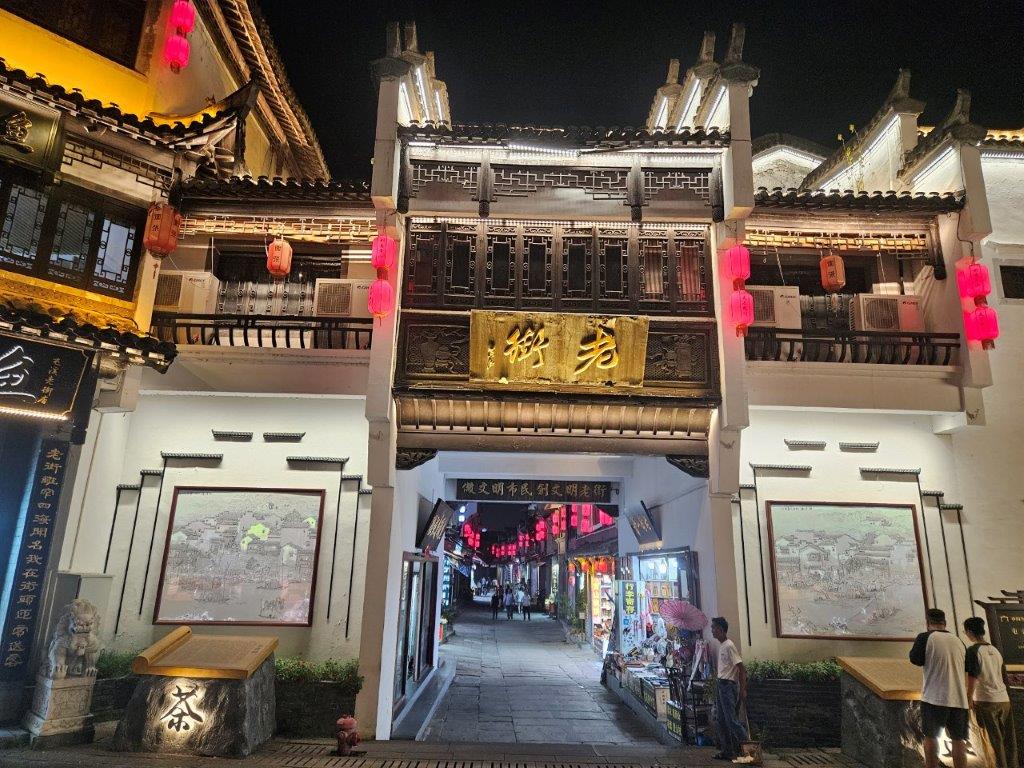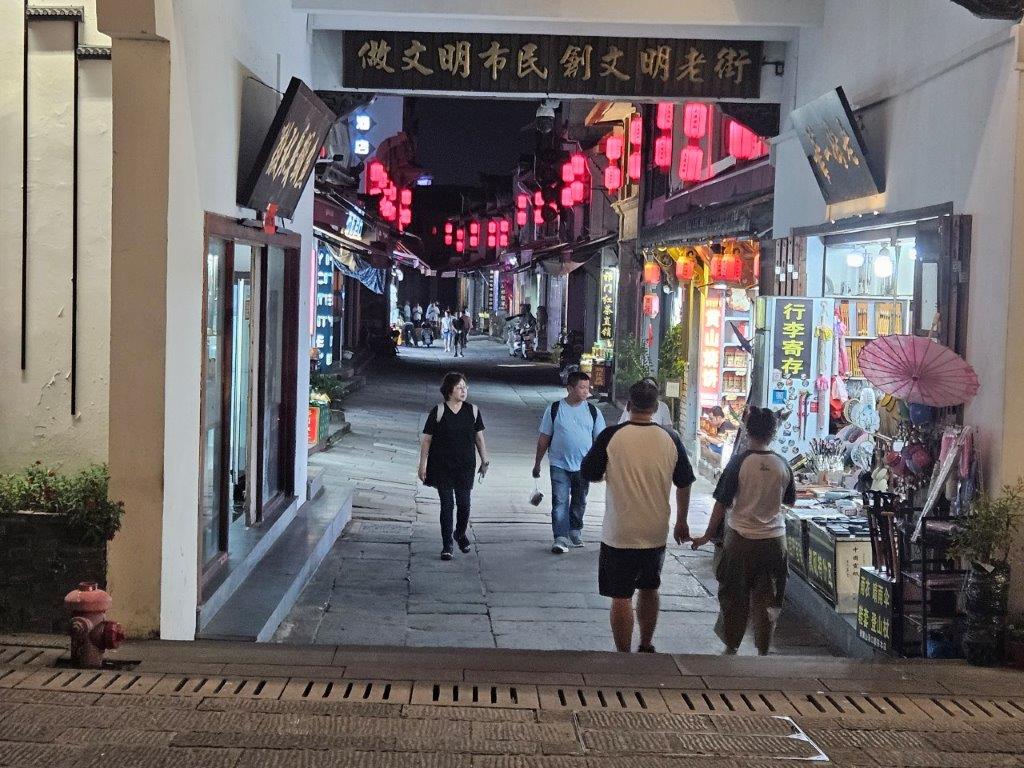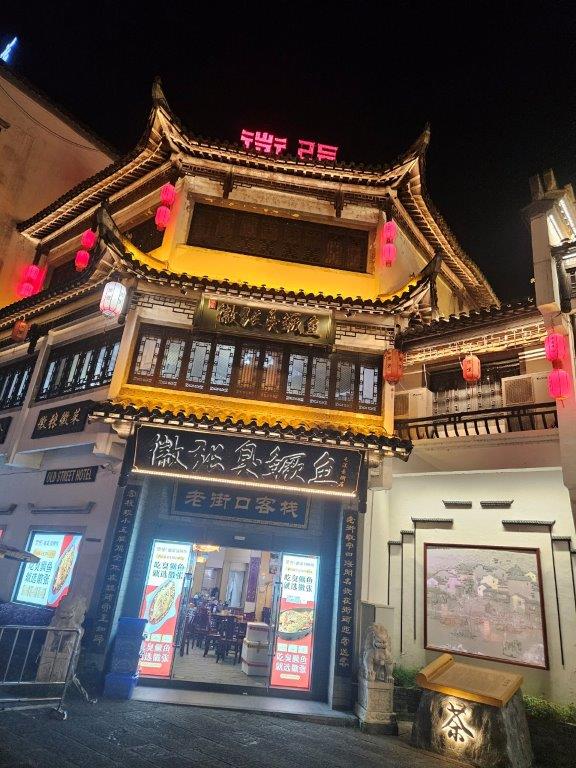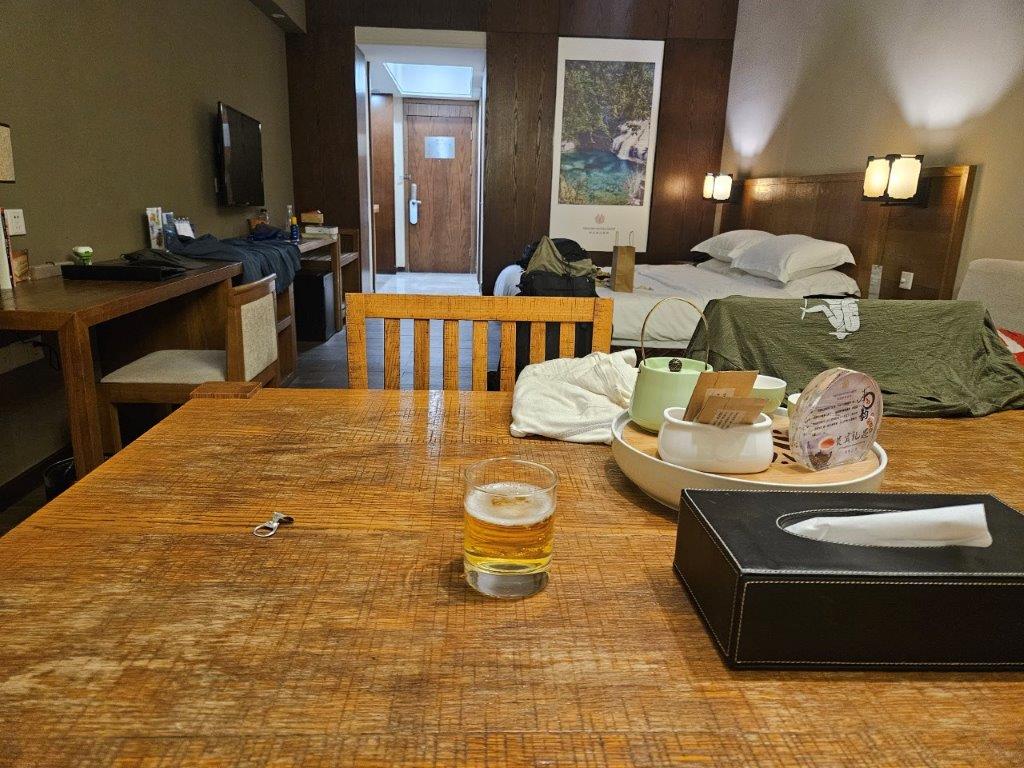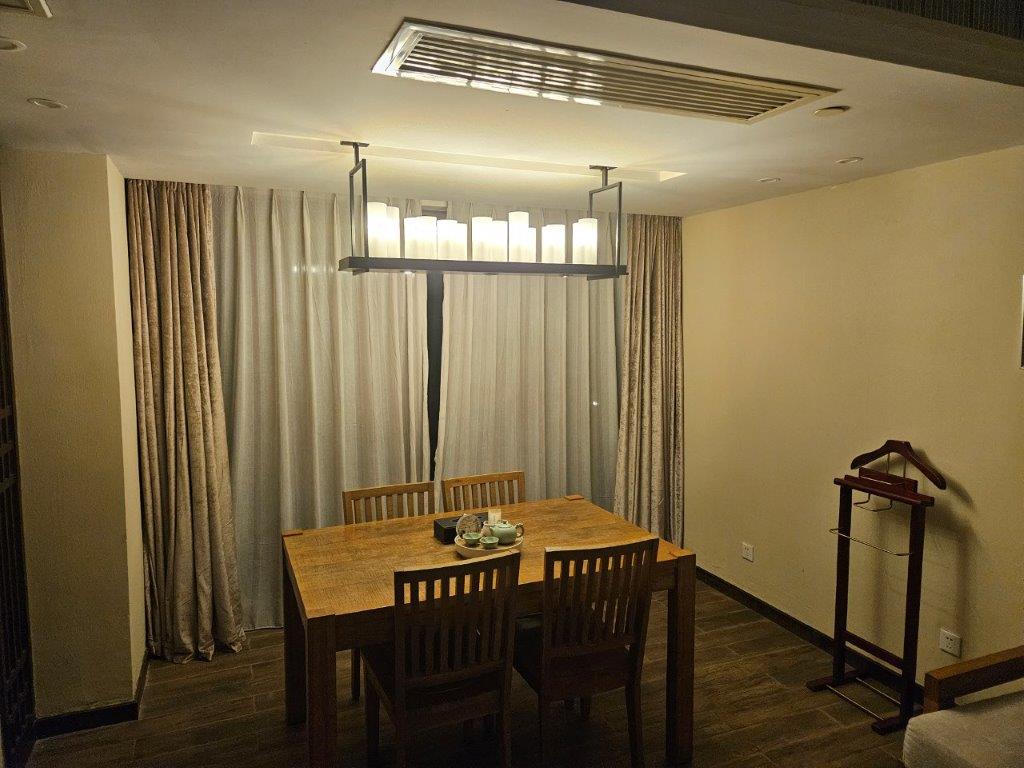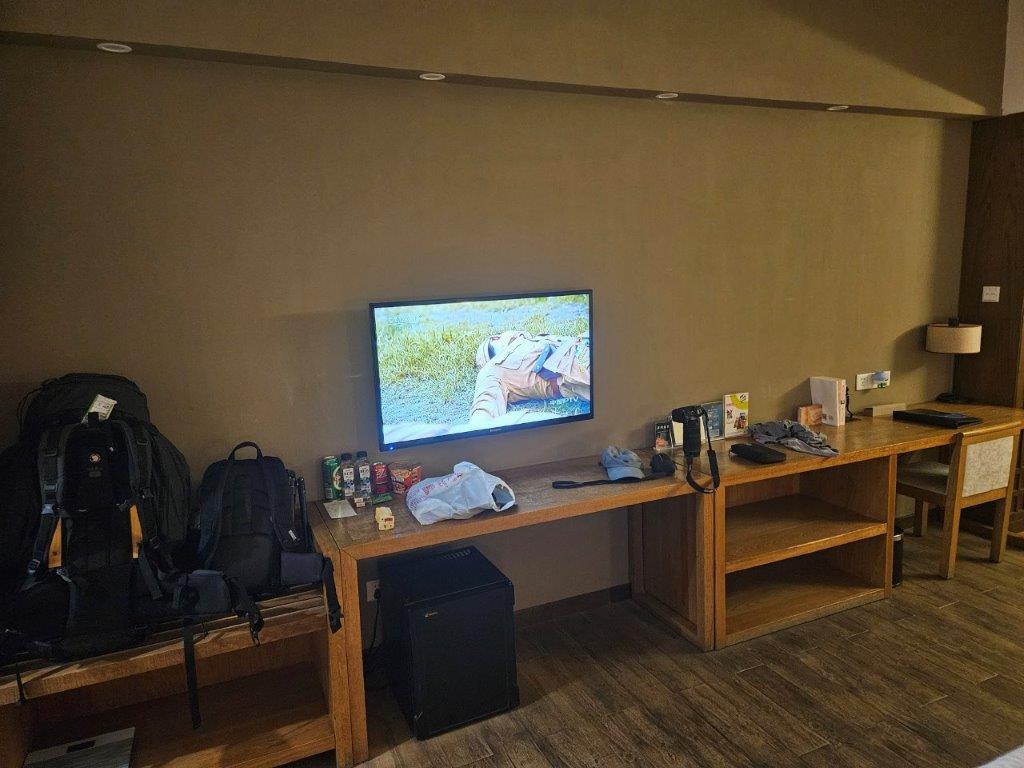12. China/Anhui: Lao Jie/Tunxi Old Street, Chinese Food Tasting and Traditional Chinese Tea Tasting
After having driven back to Huangshan City, The Wandelgek collected his large 75 L. backpack and was given a similar room as before, which was wonderful. Then he started repacking which led to his smaller backpack being emptied and thus fitting in his larger backpack. The next day he would leave the Huangshan Mountain area and travel a full day by train to his next destination.
After a shower he was picked up by Louisa and we went into the oldest part of Huangshan City. This was called Tunxi Old Street or Lao Jie. Tunxi was the old name of Huangshan City. The name change (now about 20 years ago) was for tourism purposes, because Huangshan Mountain was the main tourist magnet in this area.
After arriving; it was already dark; The Wandelgek walked through this quite long shopping street. The Ming and Qing period houses on both sides of the street were quite intact (at least the façades were), some of them had interiors that were intact too, except for the street level exteriors which were all shops and restaurants.
Louisa mentioned a restaurant which she knew from visits with her family and she adviced to try it for a typical chinese dinner.
In an artificial, rectangular pond, young koi carp were swimming ….
There were very long vitrines of glass where little examples of all sorts of dishes were displayed. As a guest you could write down the dish numbers on a paper list and hand these over at the caissière. Here the food and drinks were paid and you could sot down in the restaurant and wait for what was to come …
The amount of dishes and the variety seemed sheer endless …
… but after checking everything, choices were made.
At the table in te restaurant tea was served and after a while the dishes were served too…
Some dishes were fried some steamed while wrapped in bamboo or banana leaf ….
Some were sweetened with honey sirup …
All tasted great, which is typical for Chinese cuisine …
… but it was way to much what was ordered. A case having larger appetite with the eyes than with the stomach.
The soup above contained shrimps
Cruspy skin fried chicken on sticks …
Pig’s ear is somewhat of a delicacy in China (photo’s above and below)…
Of course I was in dire need of a large fruit juice. I think this was not orange juice but mango juice instead …
After that the bill of 138 Yuan was paid, which had an exchange rate of Euro against Renminbi: EUR 1 = CNY 7.5436 0.0051, so this was about (138/100 × 7.54 = ) 10.41 euro, which of course is an absurdly low amount for so much food and drinks.
After this Louisa led The Wandelgek through this long street Lao Jie with red lanterns everywhere, which of course reminded him of the Zhang Yimou movie Raise the Red Lantern …
There were some shops with really old interiors, like e.g. this apothecary which looked completely gorgeous …
The Wandelgek was still in search of a beautiful drawing or painting of Huangshan Mountain, but the shops seemed to not have those, so Louisa phoned an older artist she knew who made these type of paintings, but he lived quite far out of town and it became not practical for him to send a drawing, also because this was my last day in Huangshan City.
Instead we walked on and arrived at a local tea shop.
Chinese Tea
Chinese tea can be classified into six distinctive categories: white, green, yellow, oolong, black and post-fermented. Others add categories for scented and compressed teas. All of these come from varieties of the Camellia sinensis plant. Most Chinese teas are cultivated and consumed in China. It is commonly available in Chinese restaurants and grocery shops worldwide. Green tea is the most common type of tea consumed in China and often offered as complimentory with a dinner lunch or breakfast, but my personal favorites are all black teas (Chinese as well as Indian).
A traditional Chinese tea set consists of special clay or porcelain teapots, teacups, tea spoons, tea strainers, draining trays, tea forceps (for the leaves), a large forceps (for the tea cups) and occasionally, tea caddies. All of these are kept on a special wooden tea tray with an inbuilt draining arrangement and a holder for the drained water. however, in more modern times, specially built electric hotplates for tea sets are used by some Chinese people. Some of these utensils were displayed for sale on the cupboard shelves of the shop.
In some places of China, in restaurants, it is common for customers to clean their bowls and utensils at the table by rinsing them with tea from the pot. Tea may be poured over utensils into one of their bowls, or a larger bowl is may be provided as a waste receptacle for tea used to rinse bowls. In restaurants in China, tea is usually served in lieu of water, and hence tends to be a light flavoured drink.
However, when sipped as a daily beverage, Chinese people tend to use a special personal tea bottle, in which water is allowed to infuse with tea leaves for hours, and sipped continuously. This method, which is more prevalent in day-to-day Chinese life, involves the repeated use of the same tea leaves throughout the day.
There were several local black teas for sales in the shop and of course lots of attributes to drink tea, but The Wandelgek was asked to join in to a tea tasting session first…
Tea tasting ceremony
The practice of drinking tea has a long history in China, having originated there. Although tea originated in China, during the Tang dynasty, Chinese tea generally represents tea leaves which have been processed using methods inherited from ancient China. According to legend, tea was discovered by Chinese Emperor Shen Nong in 2737 BC when a leaf from a nearby shrub fell into water the emperor was boiling. The emperor was very interested in this new liquid because it had a pleasant aroma, so he drank the infusion and found it very refreshing, with a pleasant taste. He claims that tea brings vitality to the body; Therefore, tea was invented, but it is considered a medicinal beverage. Tea is deeply woven into the history and culture of China. The beverage is considered one of the seven necessities of Chinese life, along with firewood, rice, oil, salt, soy sauce and vinegar.
Chinese tea tasting is about enjoying the picked tea leaves as long as possible. Tea leaves (I’m not talking about bagged tea here) have lots of taste and can be re used as much as up to 11 times before all taste is gone.
Yes the taste gets more subtle every time you drink a cup, but it is absolutely a shame to just pour two cups from some tea leaves as shown in the photo above.
The color of the tea gets a bit lighter every time a new cup is poured …
I hear a lot of people complaining about indigestion after drinking black tea, but this can be cured very easily, by plunging a bit of hot water on the black tea leaves before serving the first tea. Black tea contains tannic acid which for almost 100% is immediately released in that bit of hot water. Throw that away and you can enjoy black tea without indigestion problems and let’s be honest, those black teas are the real deal.
After the tea tasting, The Wandelgek got into a dilemma. His backpacks were already quite fully packed but he also wanted to bring some local tea home as souvenirs for friends and for private use as well. He had to be careful what to pick, because of the weight but more because of tge volume it would occupy in the backpack. In the end he choose these beautiful and tasty local teas …
After leaving the shop, The Wandelgek slowly finished his walk over Tunxi Old Street and was happy he had had a glance of that old town …
Ar the end was a gate which long ago must have been one of Tunxi’s city wall gates, but nowadays was encapsulated by the New town of Huangshan City …
He had a last look at the many bright lights and the red lanterns, because this was about the last moment in Anhui and in the Huangshan Mountain area. It was almost time to move on to the next wonderful destination on his adventurous journey through China…
He drove back to the hotel and bought a bit of beer on the way in small supermarket shop, thanked Louisa for joining, agreed upon a pickup time the next morning, said goodbye …
… and went to his room for some last packing, drinking his beer and having a snack …
… and watching some historic series and some romantic teen soap series, before taking a shower and going to sleep …
… dreaming about buying a beautiful traditional tea tasting set and about the upcoming railway travels to the Hunan province.

